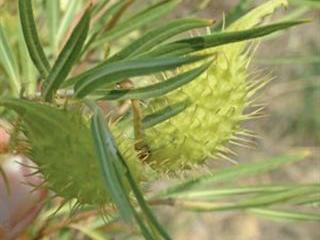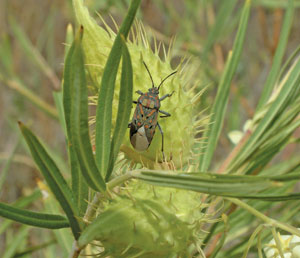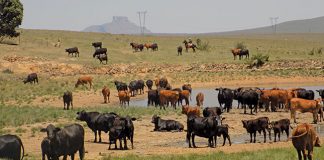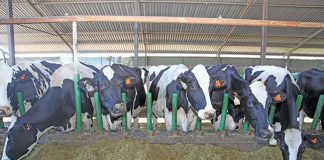
Milkweed grows in fields, in ditches, around dams, alongside rivers and next to roads. About 140 species are known. The most common on the continent is the African milkweed (Asclepias fruticosa). This is an herbaceous perennial that reaches about 1m in height. Narrow leaves branch off from opposite sides of the central stem, and have tiny hairs which may cause mild skin irritation. The primary role of these hairs is to keep caterpillars at bay.
The bulb-like seed pods, which can be up to 7cm long, split open to release small brown seeds with downy fibres that are carried through the air by the wind. When the flowers bloom, in umbrella-like clusters, they may be pink, orange or white, depending on the species.
Toxic
Milkweed gets its name from the milky white sap it oozes when any part of the plant is broken. (This in itself should serve as a warning of its poisonous nature – with very few exceptions, any plant with a milky sap is poisonous.) Although most animals will avoid eating milkweed, poisoning tends to occur when sheep, cattle, goats and horses are unable to find sufficient sources of grazing. Chickens, domestic animals and wild animals may also be affected.
As all parts of the plant are poisonous, even when dried, care must be taken when preparing or buying processed feed or silage, or harvesting crops. Milkweed can often be mixed inadvertently into straw or hay bales and fed to animals.
Any food source containing evidence of milkweed must be destroyed.

The milkweed bug can also be used to control this poisonous plant.
Signs
Generally, milkweed is not deadly in small doses. Problems arise when large quantities (about 10% of the animal’s body weight) are eaten. In these cases, death may occur within hours or days. Signs of poisoning include colic, bloating, diarrhoea, enlarged pupils and a high temperature. The animal may become disoriented, have violent spasms and lose muscle control, staggering about and displaying general weakness.
It will also have difficulty breathing and make a grunting noise whenever it exhales. In animals able to vomit (pigs, dogs and cats) and humans, this is generally the first sign of poisoning. It is a welcome initial response, as it expels much of the poison from the body, thereby lessening its effect.
Treatment
There is no antidote for milkweed poisoning. Treatment, which involves evacuation of the gut, should be left up to a vet. Animals that have nibbled the plant may suffer slight irritation in their mouths, but seldom need treatment and are likely to avoid milkweed in future.
Control
Milkweed is an important source of pollen for bees. It also helps to keep pests away from neighbouring cash crops. It can thus be beneficial – provided you do not keep livestock. If you do have animals, control milkweed by spraying with a herbicide, or by uprooting and burning the plants. A more natural method is to allow milkweed locusts to do the job for you. The plant is their staple diet – just a few locusts will strip milkweed to its bare stem in no time at all.
Paul Donovan is a biologist who specialises in reptiles and insects. Contact him at [email protected]













